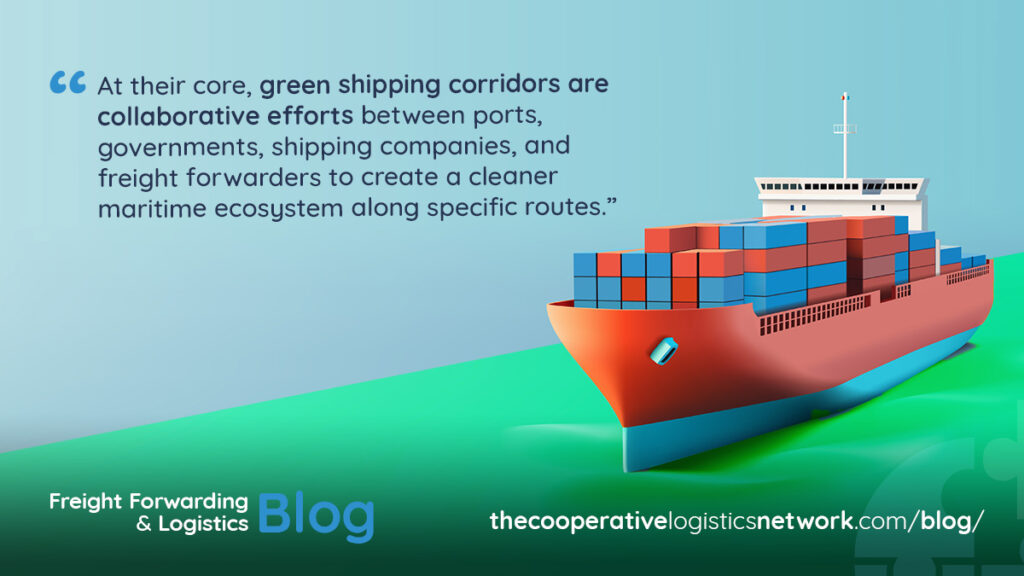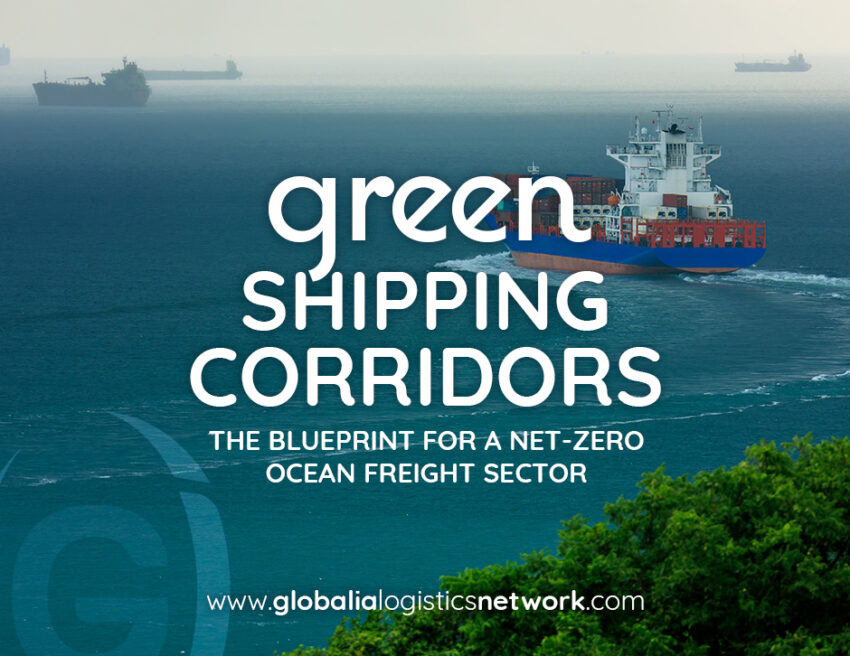In the race to decarbonize the global supply chain, few areas are under the spotlight as intensely as ocean freight. As the backbone of international trade, the shipping industry moves over 80% of the world’s goods, but it also contributes nearly 3% of global greenhouse gas emissions. Enter the concept of green shipping corridors – designated maritime routes where zero-emission solutions are tested, optimized, and implemented to create a replicable model for the rest of the world. These corridors may well be the key to a net-zero ocean freight future.
Understanding green shipping corridors
At their core, green shipping corridors are collaborative efforts between ports, governments, shipping companies, and freight forwarders to create a cleaner maritime ecosystem along specific routes. Think of them as innovation labs at sea, where decarbonization in maritime logistics isn’t just a goal but an active project. These corridors typically include commitments to deploy zero-emission vessels, invest in clean energy infrastructure like onshore power and green fuels, and share data across partners to improve efficiency.
Examples include the Los Angeles-Shanghai green corridor, one of the first international partnerships to commit to zero-emission routes. Similar initiatives are being explored between Singapore and Rotterdam, and across several key European ports. These aren’t just symbolic. They’re setting the stage for a sustainable transformation in the ocean freight sector.

Why the ocean freight sector needs them
The traditional model of ocean freight was designed for volume and cost efficiency, rather than climate performance. Heavy fuel oil, long idle times at ports, and inefficient routing all contribute to emissions. As regulatory pressure mounts from organizations like the International Maritime Organization (IMO) and customers demand greener supply chains, the need for low-emission maritime routes becomes increasingly urgent.
For freight forwarders and sustainability advocates, green corridors offer an opportunity to redefine how goods are transported across oceans. They allow logistics networks to test new technologies, such as making use of ammonia-fueled ships, hydrogen-powered tugboats, and digital platforms that optimize route planning. These innovations are gradually becoming more than pilot programs. They are shaping the future.
The role of freight forwarders in sustainable maritime transport
Freight forwarders are often the invisible architects behind global trade, but their role in sustainable logistics is becoming increasingly visible. As green shipping corridors gain traction, forwarders are uniquely positioned to influence routing decisions, consolidate shipments more efficiently, and collaborate with carriers offering low-carbon alternatives.
More than just booking agents, modern forwarders act as strategic partners who can advise clients on the eco-friendly ocean freight solutions available along specific corridors. By choosing cleaner carriers, aligning with carbon-neutral supply chains, and offering emissions tracking, freight forwarders become catalysts in achieving carbon-neutral shipping lanes.
Green shipping corridors in action
Some of the world’s largest ports and shipping alliances are now embracing the green corridor concept. The Port of Los Angeles and the Port of Shanghai have committed to supporting the first zero-emission shipping lane by 2030. This ambitious project involves retrofitting ports with clean energy infrastructure, supporting electric cargo-handling equipment, and encouraging the use of low-emission maritime routes.
Other countries are also pushing the agenda. Norway, Japan, and Singapore have all pledged to invest in sustainable ocean freight initiatives, backed by public-private partnerships and innovation grants. These are not isolated experiments but coordinated efforts to build scalable models.
For example, Maersk, one of the giants in container shipping, has announced plans to deploy methanol-powered vessels that can run on clean fuel. Their commitment goes hand in hand with the development of green corridors, as these vessels need supportive port infrastructure and regulatory clarity to operate efficiently.
Challenges on the route to net-zero
Of course, transforming global shipping isn’t as simple as flipping a switch. The main hurdles include the high cost of zero-emission ships, the limited availability of alternative fuels, and the need for global alignment in standards and regulations.
Additionally, many ports around the world lack the infrastructure needed to support clean energy vessels, making it difficult for carriers to scale up their efforts. Still, the momentum is growing. As pressure builds on the ocean freight forwarding industry to lower its carbon footprint, investments are following.
There’s also the matter of digitalization. Advanced route-planning tools, AI-powered emissions forecasting, and integrated port management systems will be essential in turning green corridors from concept into reality. This is where freight forwarders can make a huge impact by integrating these technologies into their workflows.
Autonomous freight ships and the future of green corridors
Another development closely linked to green corridors is the rise of autonomous freight ships. These AI-powered vessels, currently being tested in parts of Europe and Asia, offer the potential for reduced fuel consumption through optimized routing and fewer human errors. While still in early stages, they align naturally with the goals of green shipping: efficiency, transparency, and minimal emissions.
The combination of autonomous freight ships and green shipping corridors could radically shift how we think about ocean transport. As both technologies evolve, their synergy might unlock new standards in sustainability.
Who’s leading the charge?
Several major players are investing heavily in these initiatives. Companies like Maersk, NYK Line, CMA CGM, and MSC are not only ordering low-emission vessels but are also investing in clean fuel R&D and green corridor development. Ports such as Singapore, Rotterdam, and Los Angeles are building the infrastructure needed to support these changes.
On the technology side, firms like Wärtsilä and ABB are developing hybrid and fully electric propulsion systems. Meanwhile, startups are entering the scene with digital emission-tracking platforms tailored for freight forwarders and shipping lines. The result is a new ecosystem of innovation centered on green maritime transport.
Wrapping up
Green shipping corridors are more than a sustainability initiative. They’re a playbook for how the ocean freight sector can survive and thrive in a carbon-conscious world. By embracing collaboration, innovation, and clear accountability, these corridors offer a viable path to a net-zero ocean freight future.
Whether you’re a carrier, port authority, or freight forwarder, now is the time to get involved. Cleaner oceans and stronger, more resilient supply chains are not mutually exclusive – they go hand in hand. The blueprint is here. The question is who will follow it first.


